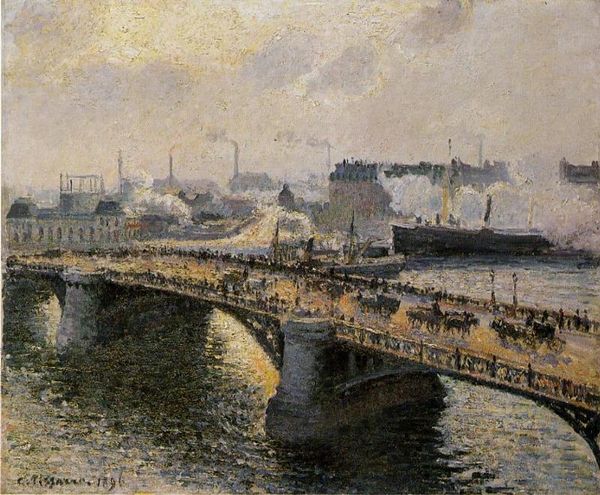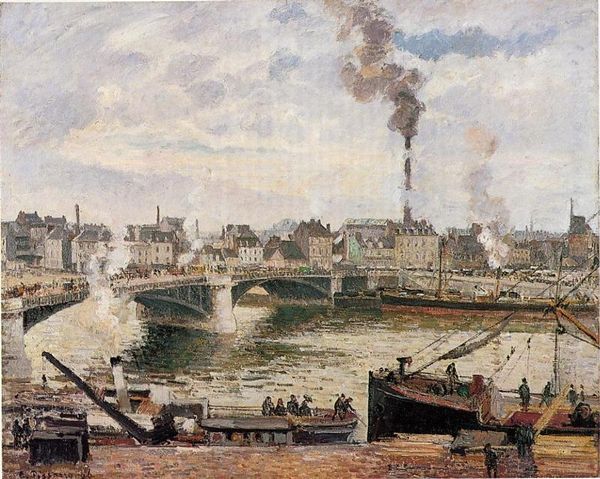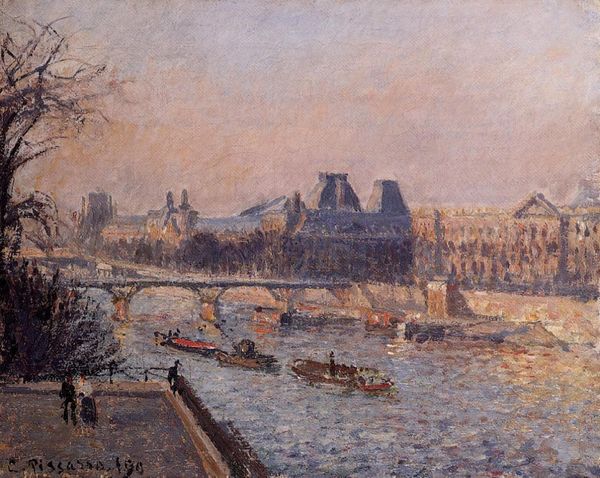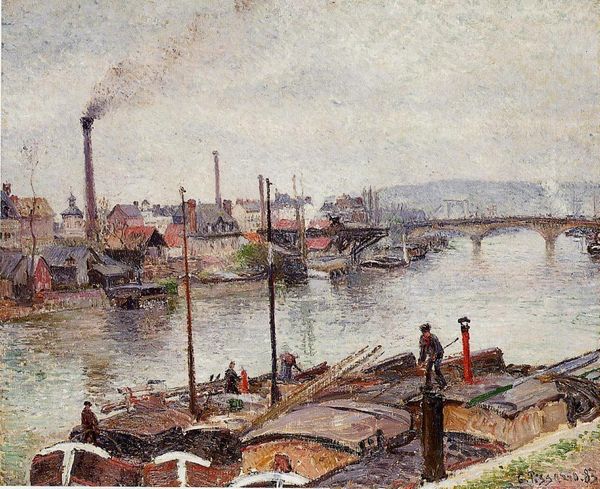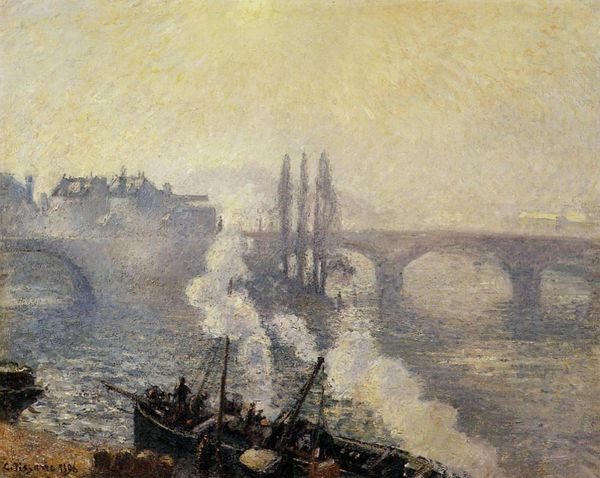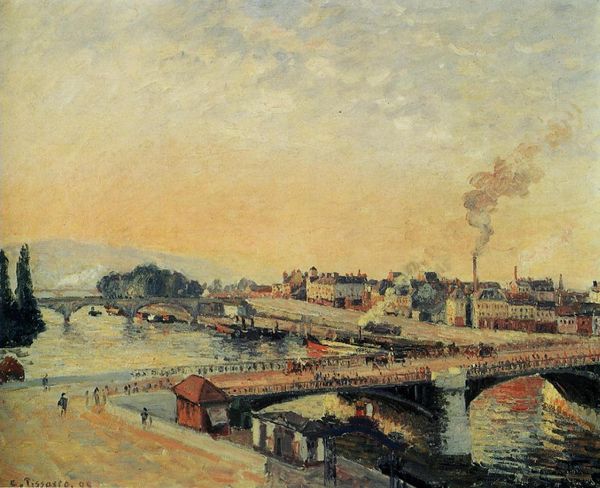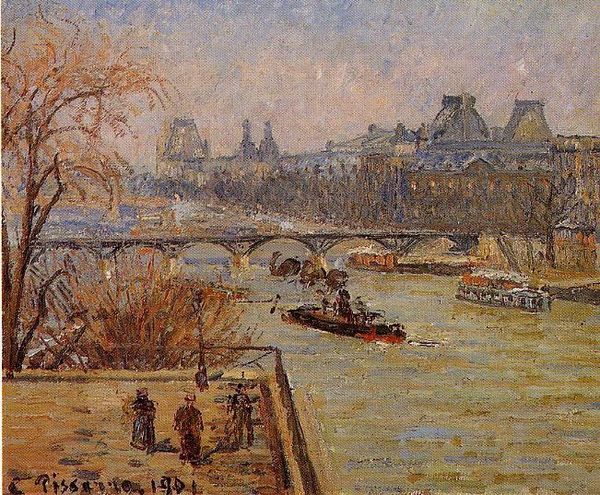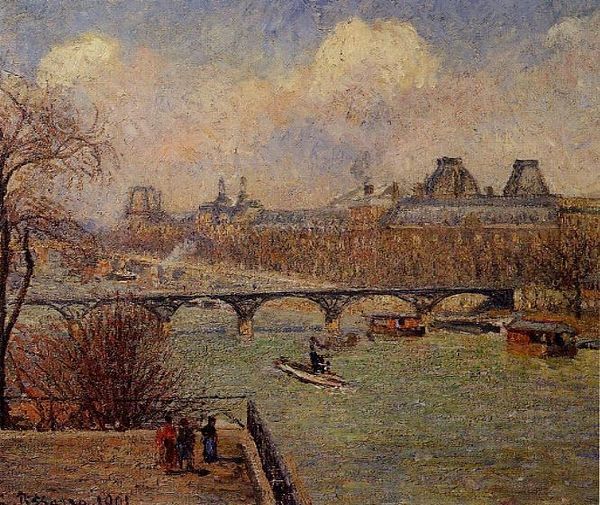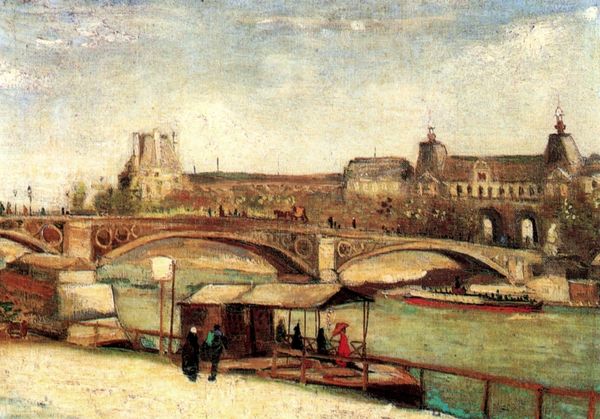
Dimensions: 61.1 x 91.5 cm
Copyright: Public domain
Curator: Here we have Camille Pissarro’s “The Pont Corneille, Rouen, Grey Weather” from 1896. It’s currently held in the National Gallery of Canada. Editor: The overall effect is subdued, almost melancholic. There's a grayness that permeates the scene, but the eye is cleverly guided through the play of light on the water's surface. Curator: Indeed. Pissarro was a master of capturing atmospheric effects. The visible brushstrokes are crucial here; they’re quite loose, breaking down the scene into a series of dabs and strokes of oil paint. Editor: Absolutely, it echoes the wider impact of the Industrial Revolution upon our surroundings. Look closely—smoke billows in the center and just behind the Pont Corneille bridge, a symbol of the shift towards the industrialized. The bridge, initially meant to connect and unite, also divides the natural world from this rapid urbanization. Curator: That's a valuable interpretation. We can consider how the structures themselves—the bridge, the boats—intersect and overlap. There’s a deliberate geometric scaffolding holding the scene together, yet Pissarro dissolves those edges, pushing the boundaries between defined forms and the atmospheric perspective he emphasizes. Editor: Furthermore, this focus aligns with the socio-economic disruptions of the era; an alienation that impacts working-class communities is visualized here as obscured, somewhat disconnected cityscapes shrouded by what would become extreme pollution. Pissarro offers social critique by revealing how modernization transformed human experience. Curator: While that context enriches our understanding, I’m drawn to the formal harmony achieved by contrasting that muted palette with strategically placed verticals—the trees, the smokestacks. Editor: Right. And Pissarro situates us at a time where human agency increasingly defined landscapes through modernity—although nature always reminds of her presence; it seems he's attempting to remind viewers what the world might become...and at what expense? Curator: Thinking about the composition, surface texture, and muted palette as primary elements… perhaps this painting is more an exploration of vision and the transience of perception? Editor: Well, maybe it can be both. Art isn’t divorced from the circumstances from which it springs, or the hands from which it was wrought. I appreciate its attention to formal qualities and material structures, but my interest rests more on the historical significance; the context adds complexity. Curator: A fair point. Perhaps the beauty resides in these layered interpretations, in that very intersection.
Comments
No comments
Be the first to comment and join the conversation on the ultimate creative platform.



